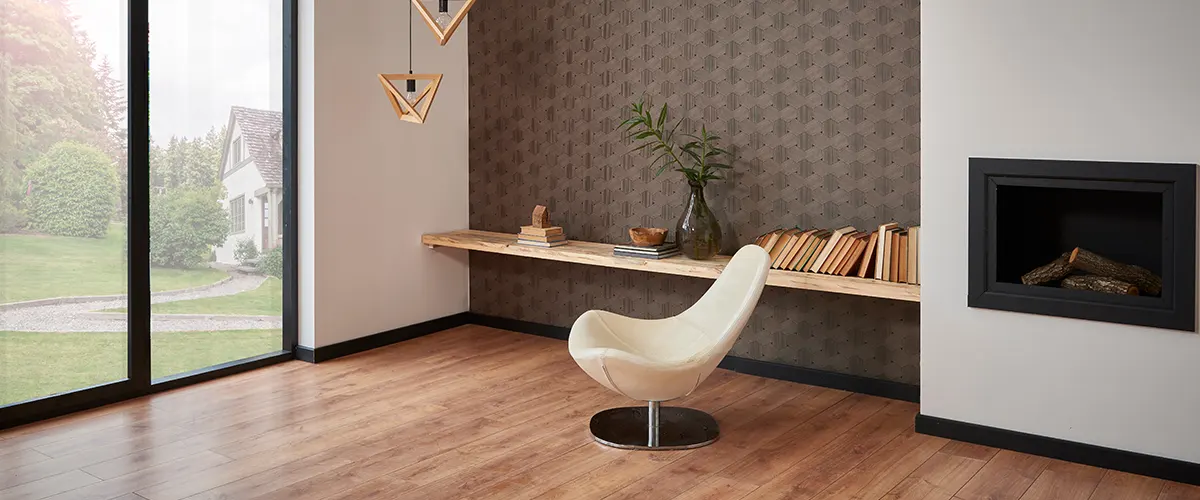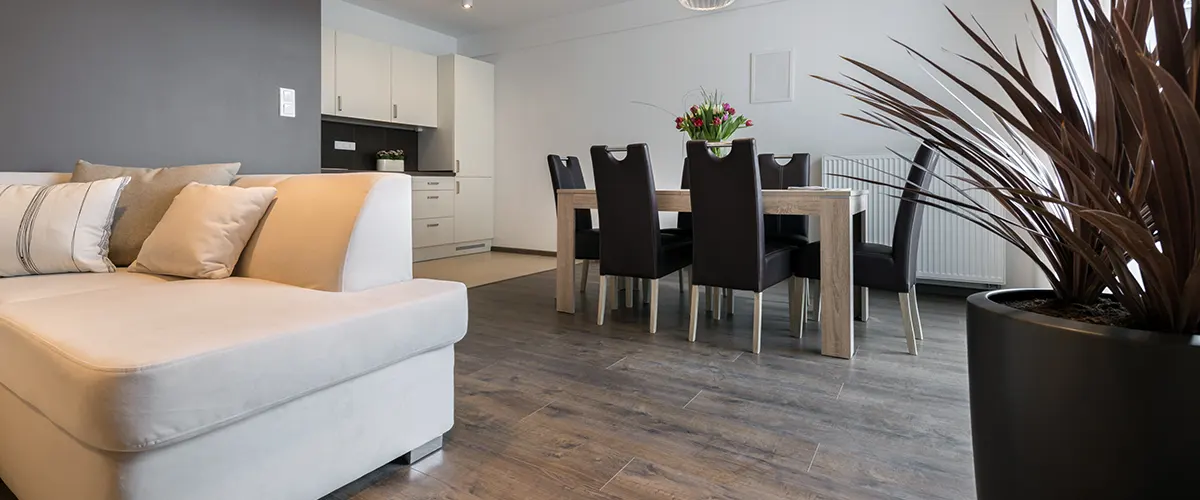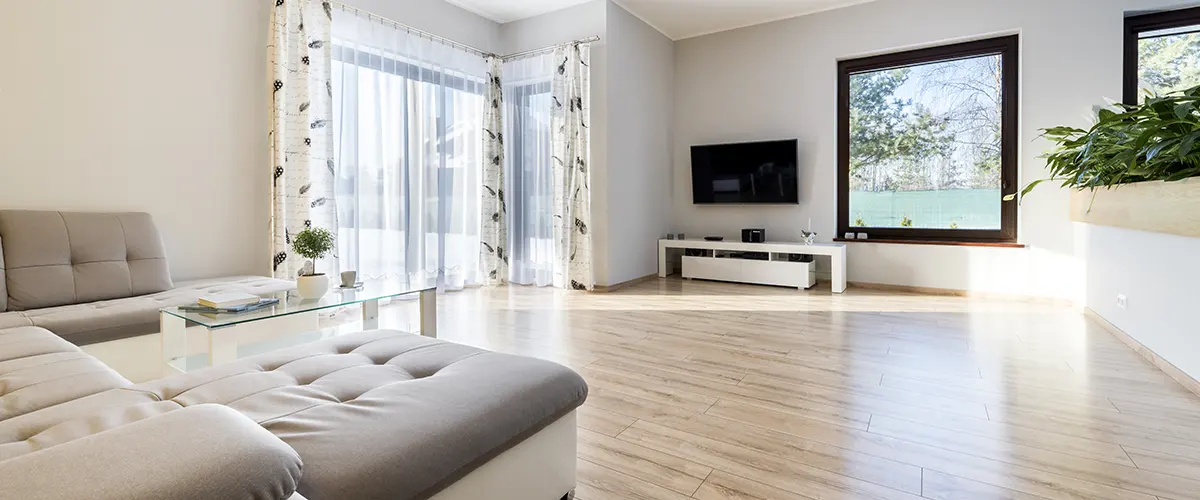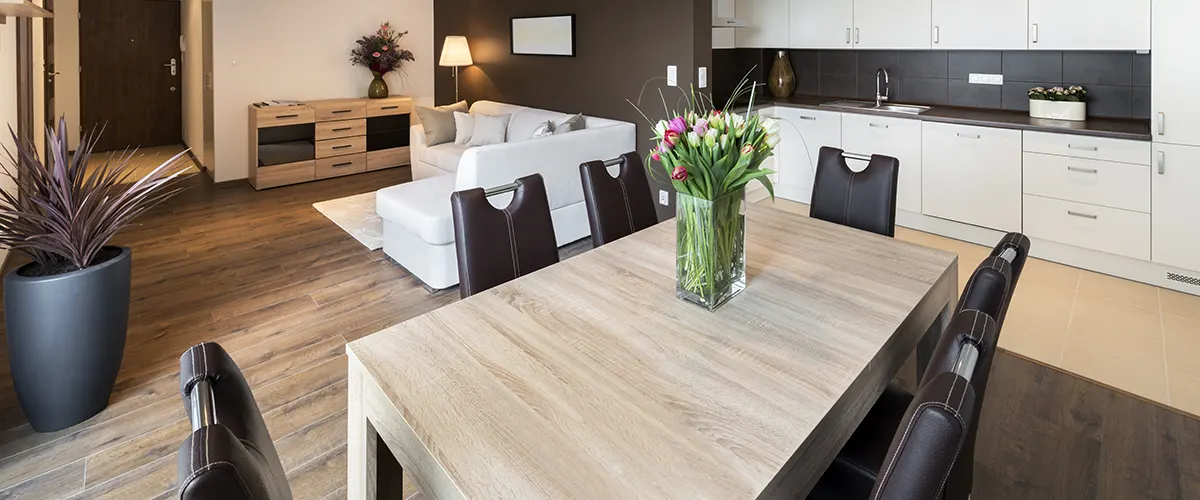
What is Vinyl Flooring?
Most standard vinyl flooring is made up of four layers of material, with the backing layer being the bottom one. This layer is generally made from cork or foam and its main function is to act as an underlayment for the vinyl flooring so that you don’t have to install another material first. The backing layer also serves as a cushion, making it more comfortable to walk on, and acts as a sound barrier to keep noise levels down.
When choosing vinyl flooring for your home, it’s important to consider all of the different features and benefits that the different layers provide. By understanding the role of each layer, you can be sure to choose a product that will meet your needs and provide you with the best possible results.
What is Laminate Flooring?
Laminate flooring is a popular choice for many homeowners because it is durable and affordable. Unlike natural flooring options like wood, stone, or cork, laminate is a synthetic material made up of four different layers—wear, décor, core, and backer—sealed together in the lamination process.
The décor layer is a printed image that can recreate the look of more expensive flooring types like wood, tile, or stone. Laminate flooring is easy to clean and maintain, and it is available in a variety of colors and styles to suit any home décor. If you are considering laminate planks for your home, be sure to consult with a professional to ensure that it is the right choice for your needs.

Laminate vs Vinyl: What Looks Best In Your Home?
Appearance: Vinyl Flooring
When shopping for vinyl plank or tile flooring, you may notice that some options look more realistic than others. This is generally due to the quality of the flooring. Higher quality vinyl flooring usually has an image or photo layer under the hard, clear wear layer. This image is usually of a wood species (for example, oak, maple, or hickory) or, less commonly, stone. The image gives the luxury vinyl flooring a realistic look and feel.
Not all vinyl flooring has this realistic look, though. Older and lower-priced sheet and tile vinyl flooring doesn’t have the same realistic look like higher quality options. When choosing vinyl plank, be sure to consider the quality of the product to get the look you want.
Appearance: Laminate Flooring
When it comes to laminate floors, one of the most notable features is their appearance. You can find nearly every color, species, and variety of natural wood floors and stone flooring in laminate form. There is an option for everyone from hand-scraped and rustic looks to reclaimed wood.
Laminate flooring can also be found in various finishes, including multi-tonal, natural, whitewashed, and more. No matter what your personal style may be, there is sure to be a laminate floor that is perfect for you. And because it is so durable and easy to maintain, you can enjoy your new floors for years to come.

Vinyl and Laminate Flooring: Similarities
- Laminate and vinyl flooring cost about the same, ranging from $1 per square foot for basic products and $6 per square foot for high-quality ones with the average cost being $3 per square foot.
- Installation methods are similar in both cases.
- Both feature realistic depictions of wood, stone, and other natural materials.
- Both are low-maintenance, stain-resistant flooring options, requiring only occasional sweeping and mopping.
- Laminate and vinyl plank flooring are both excellent choices for radiant floors. They conduct heat equally well and have similar lifespans, easily lasting 10 to 25 years.
- Top-quality laminate and vinyl plank flooring can also increase a home’s resale value. That being said, not all laminate and vinyl products are created equal. Inferior products may not offer the same benefits in terms of heat conductivity or lifespan. When choosing laminate or vinyl plank flooring, be sure to select a high-quality product to get the most value for your money.
- Ultimately, both laminate and vinyl offer homeowners a beautiful and low-maintenance floor.
Laminate and Vinyl Flooring: Differences
- Laminate is made of multiple layers of synthetic material sealed together with a photographic image of wood, stone, or other natural material on the surface.
- Vinyl planks are made of a single layer of solid vinyl with a photographic image printed on top. Because it is a solid piece of material, vinyl is more resistant to water damage than laminate.
- As opposed to hardwood floors, luxury vinyl planks are also softer and warmer to the touch than laminate, making them more comfortable to walk on.
- Laminate is more durable and scratch-resistant than vinyl, however, and it can be refinished if it becomes damaged.
- Vinyl floors are available in a wider range of formats, including VCT and sheet flooring. And because they have a textured surface, they can closely resemble natural materials like stone or wood.

